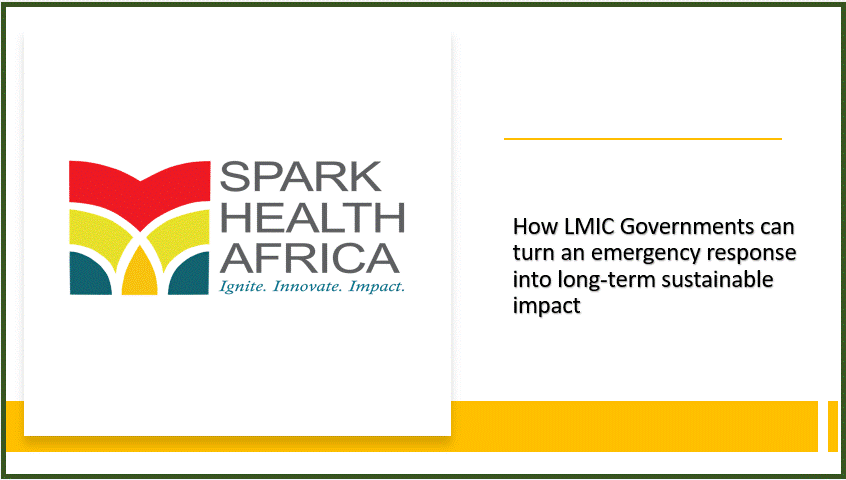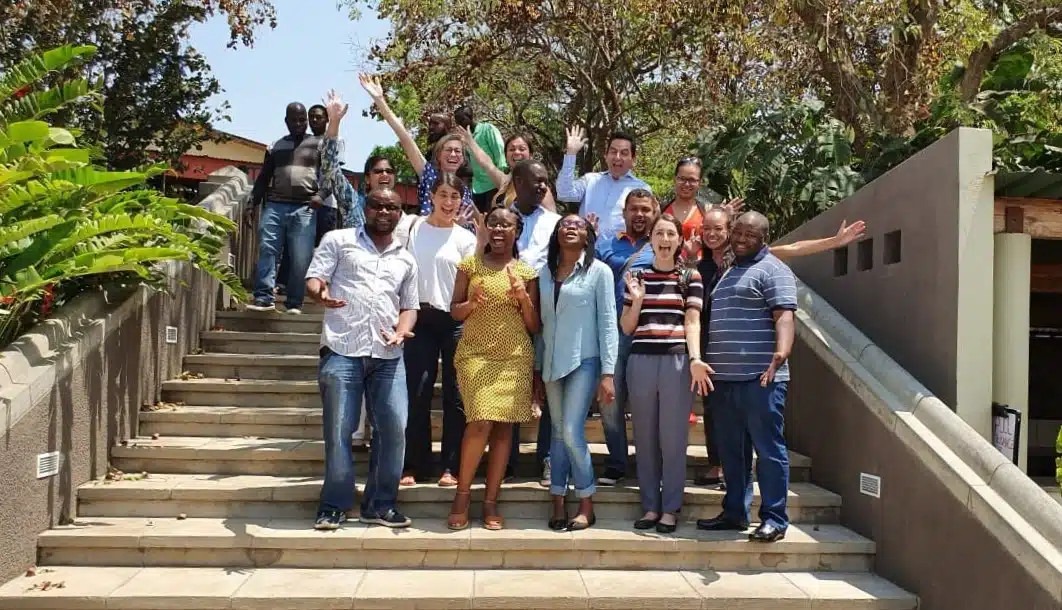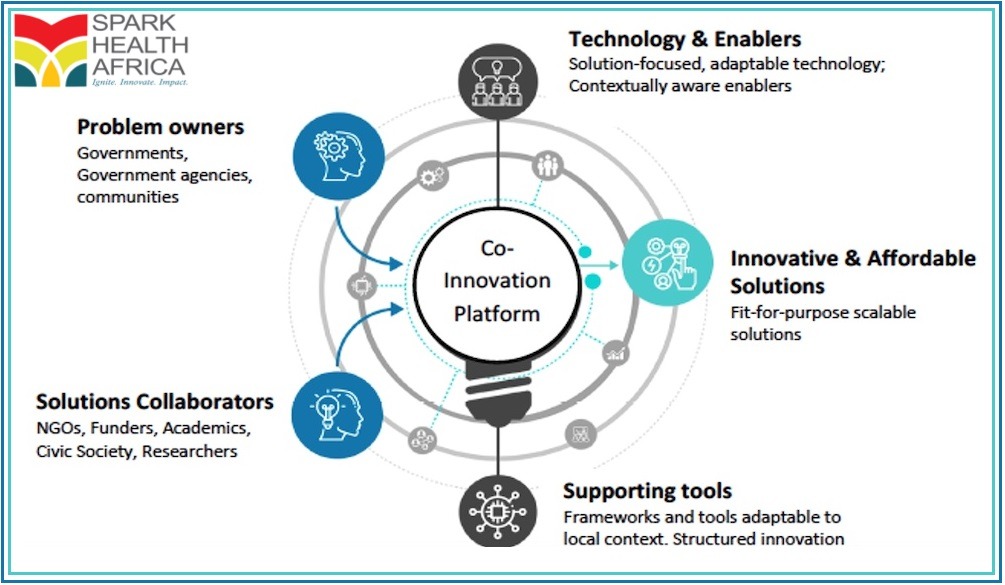
Examples from Uganda and Cote d’Ivoire on COVID-19 programs implemented with a sustainability lens
Lead author:
Co authors:
Introduction
Over the last two years, the COVID-19 pandemic has dominated the global health sector. For many governments in sub-Saharan Africa donor funding and NGO support has been critical to their COVID-19 response. What is not clear is what happens to the long-term government priorities when emergency funding and short-term projects end? Further, achieving Universal Health Coverage requires thinking about the future while also responding to the present. Governments must take lessons from the past and work collaboratively with partners to make sustainable progress. What also remains unclear is how governments can address immediate needs while facing forward to maintain momentum on their long-term priorities. This article shares lessons from the governments of Uganda and Cote d’Ivoire on how they balanced the emergency responses against their long-term priorities in the context of their responses to COVID-19. We provide mini cases of the respective countries’ responses and then draw on key lessons that point to how they implemented emergency COVID-19 programs with a sustainability lens. thaccess.org
Uganda case: Key pillars of the government’s response
The Government of Uganda recognized the dual threat that COVID-19 posed to its capacity to respond to emergency services and essential services, especially the burden this would impose on health care workers in general, and specifically nurses working on the frontline. At the start of the pandemic in January 2020, the Ministry of Health of Uganda did a scenario-based response plan where it activated its incident management system through a national taskforce coupled with District Task Force teams, all managed through the Office of the Prime Minister to ensure coordinated efforts. This informed the crafting of a 9-pillar response strategy covering critical areas (Surveillance, Case management, Laboratory, Risk communication, Logistics, Strategic information and research, Community involvement, Vaccination, and Continuation of Essential services).
It was not enough to have a national strategy if districts could not operationalize the response plan. Hence, through the leadership of the Prime Minister, the government established District Task Force teams in mid-January of 2020 to operationalize the national response at the local level to cater for the context of the different localities. In demonstration of political ownership, the coordination of the strategy and partners was done from the Office of the Prime Minister in recognition that there are things that only governments can do, e.g., border control, or do with stronger credibility such as convening multisectoral stakeholders.
Government took the following critical actions:
Cote d’Ivoire case: Key pillars of the government’s response
In Cote d’Ivoire, the government recognized that the COVID-19 pandemic affected multiple facets of society, not just health, and so adopted a multi-sectoral approach to respond to the crisis. Strategies for the national response were developed at the central level but cascaded down to the local level using coordination mechanisms embedded within key response sectors, namely, health, and security. The government’s priority was to create a legal framework that would allow it to develop and implement policies that would support its response to the COVID-19 pandemic. As a result, through the leadership of the President, there was quick buy-in across the political spectrum to ensure a unified national response.
Furthermore, recognizing that COVID-19 came with social vices such as misinformation, central to the government’s response was building trust with healthcare workers and communities through science and data. The Government, therefore, established a scientific committee that was in direct contact with bodies such as the World Health Organization to get updated guidance on the pathology of COVID-19 and prevention and treatment guidelines. Government felt that it had to demonstrate transparency to the community and health workers on all decisions it made in response to the COVID-19 pandemic. This transparency was especially important in mobilizing the support of the community as co-creators of solutions to the challenges that society was facing.
Government took the following critical actions:
Discussion and key lessons
Government leadership at the centre of the response
Nothing has the power to bring stakeholders together more than crisis, and the COVID-19 pandemic has allowed partners to build confidence in the government by recognizing that there are certain things that only the government can implement. There are actions that governments can take which would be impossible for any development partner to enforce. Some of the most impactful measures to curtail the spread of the coronavirus, such as travel restrictions, lockdowns, and mandatory mask-wearing, require multisectoral collaboration and can only be instituted by the government.
Both the Governments of Uganda and Cote d’Ivoire recognized that the COVID-19 pandemic affected multiple facets of society, not just health, and so adopted a multisectoral approach to respond to the crisis. In both countries, the President chairs the multisectoral and multi-disciplinary National Task Force responsible for mounting a response to emergencies. This buy-in at the highest-level signaled political commitment to development and implementation of strategies and ownership of the response and its outcomes.
Furthermore, in Cote d’Ivoire, the Government integrated all implementing partners into the national taskforce to mobilize and pool resources towards a concerted response effort. Being at the same table allowed all stakeholders to have a common understanding of the challenge, appreciate government’s priorities, jointly plan mutually reinforcing activities based on visibility of who is doing what, where, and how, and have a shared system to measure success.
Building resilience from past and recent crises
When faced with a crisis, there’s value in putting previous experience to good use to avoid being harmed again. Uganda has experienced Ebola Virus Disease outbreaks of epidemic proportions for the past two decades (2000, 2014, 2017, and 2018). These experiences have on several occasions tested the public health system and built-in resilience in health workers to withstand these acute but periodically sustained shocks. The Government of Uganda applied lessons from past Ebola Virus Disease pandemics to respond to the COVID-19 pandemic, from which it had built core structures, capacity, and institutional relationships and networks that helped it respond quickly. Prior to the COVID-19 pandemic, the public health system had already undergone 18 months of preparedness and emergency response to Ebola, and so it had an active public health emergency operation that was already in preparedness and response mode for COVID-19.
Investing in a resilient essential health service system
For both countries, the key scaling strategy was to ring-fence resources to build capacity for essential health services to absorb short-term shocks and long-term systemic challenges, and then integrating the COVID-19 response within essential care, and not create a parallel response. Specifically, there are structures and mechanisms that the Governments of Uganda and Cote d’Ivoire have put in place that will exist and operate after the pandemic ends.
For instance, upgrades to port health structures at national border crossings that were done to mitigate the spread of COVID-19 across countries can be adapted for use during non-emergency situations as part of enhanced routine essential services without further investments in equipment. Furthermore, the experience that health workers had gained working under emergency conditions will increase their capacity to provide essential services especially under conditions of increased demand long after the pandemic has ended. The difficult conditions and painful experiences that health workers lived through during the pandemic will give them a steeliness of nerves that will give the health system in general immunity to long-term systemic challenges that they would not ordinarily be able to absorb.
Also, in 2018 way before the COVID-19 pandemic, the government had a vision for scaling up capacity for emergency oxygen supplies. Under essential care conditions there was no critical demand for oxygen supplies and really no impetus to implement the plan. The outbreak of COVID-19, however, created the sense of urgency required to mobilize resources and activate a long-term scale up plan to generate capacity to increase emergency oxygen supplies. The Government of Uganda, with support from funding partners such as The Global Fund, and implementing partners such as the Clinton Health Access Initiative, invested upwards of US$20m toward construction of oxygen generation plants to increase local production capacity. Government also ensured that public hospitals across the country were fitted with oxygen supply lines to ensure that as many COVID-19 patients requiring emergency oxygen supply received it. While the emergency response to COVID-19 has resulted in hospital wards being upgraded to ensure that they have the capacity to provide oxygen to COVID-19 patients, this service has already started being scaled across the different wards, from maternity through to the general wards for long after the pandemic passes. Furthermore, government recognized that it was futile to equip hospitals with emergency oxygen capabilities if patients could not access the facilities on time. This prompted the government to increase the coverage for its emergency transportation services by adding 320 ambulances to its national fleet to serve both during the emergency response as well as for essential services long after the pandemic.
Finally, both the Governments of Uganda and Cote d’Ivoire invested in building robust health management information systems that can inform real-time public health interventions. During the early days of the pandemic, demand for (and access to) routine care such as antenatal care and child vaccinations dropped dramatically because of various social factors such as lockdown regulations and loss of income that prevented pregnant women and caregivers from visiting health facilities. Adverse outcomes arising from this lack of access during and on account of the COVID-19 pandemic retarded the governments’ progress toward achieving their set targets. During subsequent waves of the pandemic, through timeous analysis of data during weekly program coordination and surveillance meetings, these governments continuously monitored data to see how resources (especially personnel) could be redeployed to ensure provision of essential services during crisis, allowing the governments to curate short term responses and apply them to long term system priorities.
During the COVID-19 pandemic, the virtual environment became increasingly accessible for meetings and training workshops. Going forward, this will allow governments to widen their coverage for trainings and help them train at scale, with more health workers undergoing virtual training over a shorter period compared to the limitations of in person training.
Finally, changes in social norms around acceptance of infection prevention interventions such as handwashing, sanitizing, face mask wearing will probably outlive the pandemic and contribute to lower incidences of hygiene-related illnesses, that will lower the burden on essential care services.
Transparency and Trust are key to engaging communities as co-creators of solutions
In Cote d’Ivoire, the Government established a scientific committee that was in direct contact with WHO to get updated guidance on the pathology of COVID-19 and prevention and treatment guidelines. Government felt that it had to demonstrate transparency to the community and health workers on all decisions it made in response to the COVID-19 pandemic. This transparency was especially important in mobilizing the support of the community to adopt and adhere to guidelines for interventions (such as social distancing, handwashing/sanitization, face mask-wearing, etc.) designed to prevent the spread of COVID-19 and prevent illness and death.
In Uganda, the Village Health Teams, made up of youths that are handpicked by their communities to link these communities at the household and individual level with the formal health care system, actively promote health-seeking behaviour, demand for formal health services, and social accountability. This strong grassroots structure of VHTs existed during the Ebola Virus Disease outbreaks, and, given the trust that existed with communities, used the same mechanisms to disseminate COVID-19 messages.
Conclusion
Crises such as natural disasters and pandemics rarely allow individuals, communities, countries, and indeed the global community an opportunity to mount a credible response in a short period that can be sustained in the long-term. However, the Governments of Uganda and Cote d’Ivoire offer us good examples of how we can take advantage of crises to craft responses to the emergency that can be adapted for future use after the crises has passed.
Central to any national response to a crisis is the leadership of the government. Governments are the custodians of the welfare of their citizens, and only they have the mandate to enforce universal measures and convening power to bring multisectoral actors together around a common agenda to protect citizens.
The governments of Uganda and Cote d’Ivoire have also shown us that these protections to citizens are more sustainable when built around a resilient public health system that leverages its assets, that includes its philanthropic and private sector partners.
Finally, the COVID-19 pandemic has also shown that citizens are not only recipients of lifesaving interventions, but they too have a critical role to play as partners in the co-creation of the solutions to the challenges that they are face as communities. In this regard, the Governments of Uganda and Cote d’Ivoire have shown us the importance that trust plays in the development and sustainable implementation of solutions in response to a crisis. This trust between governments and communities is strengthened when the interventions co-created with communities result in better wellbeing outcomes.


